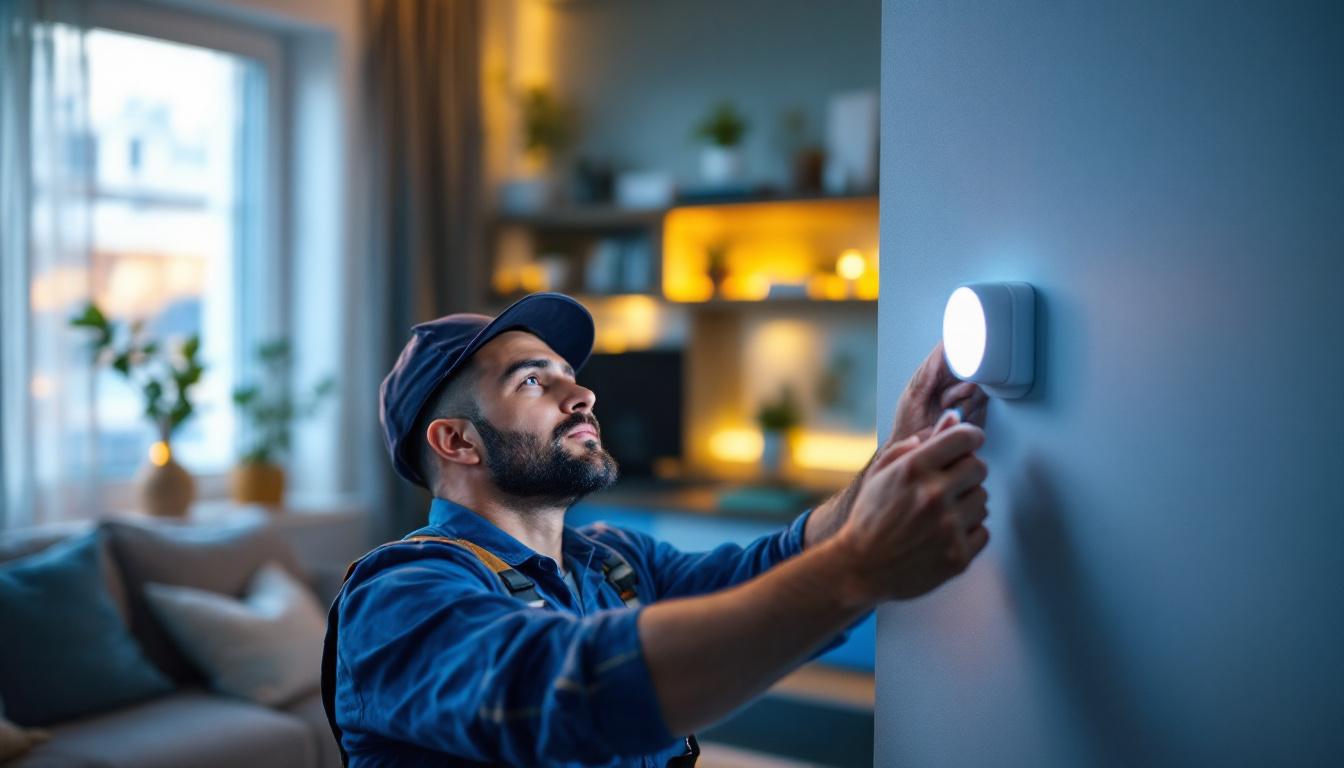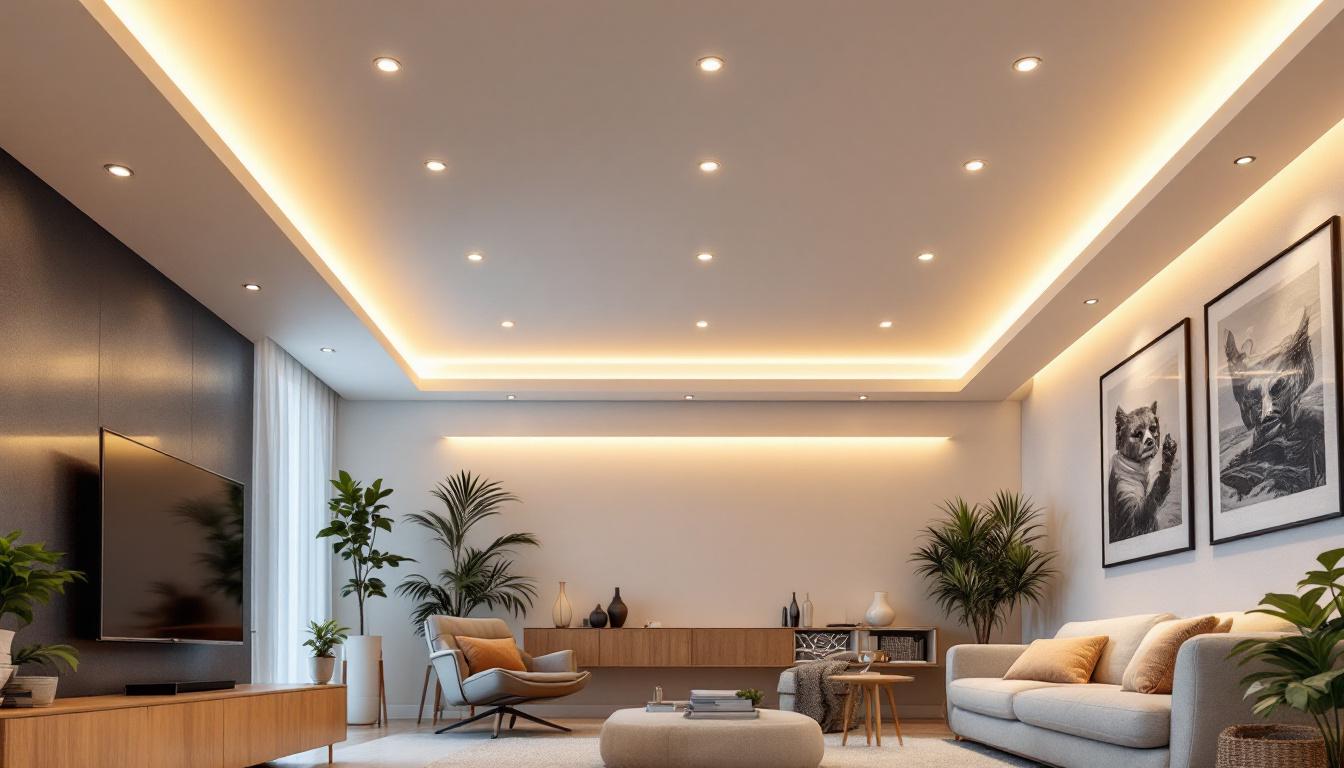
In the ever-evolving world of lighting technology, LED light sensors have emerged as a game-changer for lighting contractors. These innovative devices not only enhance the efficiency of lighting systems but also offer significant opportunities for contractors to expand their services and improve client satisfaction. This article delves into the various ways LED light sensors can boost a lighting contractor’s business, from improving energy efficiency to enhancing project appeal.
LED light sensors are devices designed to detect ambient light levels and adjust the brightness of LED fixtures accordingly. They can be integrated into various lighting systems, providing automatic control that enhances energy efficiency and user convenience. By understanding how these sensors work, lighting contractors can better serve their clients and stay ahead of the competition.
At their core, LED light sensors operate based on the principle of light detection. They utilize photodiodes or phototransistors to measure the intensity of surrounding light. When the ambient light falls below a predetermined threshold, the sensor activates the LED lights, ensuring that spaces remain adequately illuminated. Conversely, when natural light levels rise, the sensor dims or turns off the lights, conserving energy.
This automatic adjustment not only reduces energy consumption but also prolongs the lifespan of the LED fixtures. As a result, clients benefit from lower utility bills and reduced maintenance costs, making LED light sensors an attractive option for both residential and commercial applications. Additionally, many modern LED light sensors come equipped with smart technology, allowing users to customize settings through mobile applications or integrated building management systems. This level of control not only enhances user experience but also provides valuable data on light usage patterns, further optimizing energy efficiency.
There are several types of LED light sensors available, each designed for specific applications. Some of the most common types include:
Understanding the different types of sensors allows lighting contractors to propose tailored solutions that meet the unique needs of their clients. Furthermore, advancements in technology have led to the development of hybrid sensors that combine multiple functionalities. For instance, a single unit may incorporate both occupancy and daylight harvesting capabilities, providing a comprehensive lighting solution that maximizes energy savings while ensuring optimal illumination. This versatility not only simplifies installation but also enhances the overall efficiency of lighting systems, making them an ideal choice for modern smart buildings.
Integrating LED light sensors into lighting projects offers numerous benefits for contractors. Not only do these devices enhance the functionality of lighting systems, but they also create opportunities for contractors to differentiate themselves in a competitive market.
One of the most compelling advantages of LED light sensors is their ability to significantly reduce energy consumption. By automatically adjusting lighting based on ambient light levels or occupancy, these sensors help clients save on electricity bills. For contractors, this translates into a selling point that resonates with environmentally conscious customers and businesses looking to cut costs.
Moreover, many utility companies offer rebates or incentives for installing energy-efficient lighting systems. Contractors who incorporate LED light sensors into their projects can help clients take advantage of these programs, further enhancing their value proposition. This not only fosters a sense of financial prudence among clients but also positions contractors as knowledgeable partners who can navigate the complexities of energy-saving initiatives.
Clients today are increasingly looking for smart solutions that enhance convenience and comfort. LED light sensors provide an intuitive lighting experience, automatically adjusting to changing conditions without requiring manual intervention. This level of automation not only improves user satisfaction but also positions contractors as forward-thinking professionals who prioritize client needs.
Additionally, by offering solutions that enhance energy efficiency and reduce costs, contractors can build long-term relationships with clients, leading to repeat business and referrals. The seamless integration of technology into everyday life is a growing expectation, and by meeting this demand, contractors can create a loyal customer base that appreciates the added value of modern lighting solutions. This commitment to client satisfaction can also lead to positive reviews and testimonials, further enhancing a contractor’s reputation in the industry.
Incorporating LED light sensors into lighting designs can elevate the overall appeal of a project. These sensors enable contractors to create dynamic lighting environments that adapt to the needs of the space and its occupants. For instance, in commercial settings, lighting can be adjusted based on the time of day or the number of people present, creating a more welcoming atmosphere.
Furthermore, showcasing advanced technology like LED light sensors can differentiate a contractor’s services from competitors. Clients are often impressed by innovative solutions that enhance both functionality and aesthetics, making it easier for contractors to secure new projects. The ability to present a project that not only meets but exceeds client expectations can lead to a portfolio that stands out in a crowded marketplace. Additionally, as smart home and building technologies continue to evolve, contractors who are early adopters of LED light sensors position themselves as leaders in the industry, ready to tackle future challenges and opportunities with confidence.
While the benefits of LED light sensors are clear, successful implementation requires careful planning and consideration. Lighting contractors must be equipped with the knowledge and skills to integrate these devices effectively into their projects.
The first step in implementing LED light sensors is to assess the specific needs of each client. This involves understanding their lighting requirements, preferences, and any existing systems in place. By conducting a thorough assessment, contractors can recommend the most suitable sensor types and configurations.
For example, a residential client may benefit from occupancy sensors in high-traffic areas, while a commercial client might prioritize daylight harvesting sensors to maximize energy savings. Tailoring solutions to individual client needs ensures satisfaction and enhances the likelihood of project success.
With a variety of LED light sensors available on the market, selecting the right products is crucial. Contractors should consider factors such as compatibility with existing lighting systems, ease of installation, and reliability. Additionally, opting for high-quality sensors from reputable manufacturers can minimize potential issues and ensure long-term performance.
It’s also essential to stay informed about the latest advancements in sensor technology. As the industry evolves, new products may offer enhanced features or improved energy efficiency, providing contractors with additional options to meet client demands.
Proper installation is key to maximizing the benefits of LED light sensors. Contractors should follow manufacturer guidelines and industry best practices to ensure optimal performance. This may involve calibrating sensors to specific light levels or configuring settings based on client preferences.
Additionally, educating clients about the operation and maintenance of LED light sensors is vital. Providing clear instructions on how to adjust settings or troubleshoot common issues can empower clients and enhance their overall experience with the technology.
To fully leverage the advantages of LED light sensors, lighting contractors must effectively market these solutions to potential clients. A strategic marketing approach can help raise awareness and highlight the benefits of integrating sensors into lighting projects.
Many clients may not be aware of the advantages that LED light sensors offer. Contractors should take the initiative to educate clients about how these devices can enhance energy efficiency, reduce costs, and improve overall comfort. This can be achieved through informative brochures, presentations, or even workshops.
By clearly communicating the value proposition of LED light sensors, contractors can position themselves as trusted advisors who prioritize client needs and environmental sustainability.
Highlighting successful projects that incorporated LED light sensors can serve as powerful marketing tools. Contractors should document case studies that showcase the benefits achieved, such as energy savings, improved client satisfaction, and enhanced aesthetics.
These case studies can be shared on websites, social media platforms, or during client meetings. Visual evidence of successful implementations can instill confidence in potential clients and encourage them to consider similar solutions for their own projects.
In today’s digital age, leveraging online marketing strategies is essential for reaching a broader audience. Contractors can utilize social media, email marketing, and search engine optimization (SEO) to promote their services and highlight the advantages of LED light sensors.
Creating engaging content, such as blog posts, videos, or infographics, can attract potential clients and establish the contractor as an industry expert. By consistently sharing valuable information, contractors can build trust and credibility, ultimately leading to increased inquiries and project opportunities.
LED light sensors represent a significant opportunity for lighting contractors to enhance their services and boost their business. By understanding how these sensors work, recognizing their benefits, and effectively implementing and marketing them, contractors can differentiate themselves in a competitive landscape.
As the demand for energy-efficient and smart lighting solutions continues to grow, embracing LED light sensors can position contractors as leaders in the industry. By prioritizing client needs and staying informed about technological advancements, lighting contractors can ensure long-term success and satisfaction in their projects.
Ready to elevate your lighting projects with the efficiency and innovation of LED light sensors? At LumenWholesale, we provide lighting contractors like you with the highest quality, spec-grade lighting products at prices that make sense for your business. Say goodbye to local distributor markups and hello to our extensive selection of reliable lighting solutions that meet rigorous industry standards. Plus, with free shipping on bulk orders, you can stock up on premium lighting without worrying about hidden fees or compromises. Don’t miss out on the perfect combination of quality, affordability, and convenience. Visit LumenWholesale today and discover how we can help you shine brighter in the competitive world of lighting contracting. Wholesale Lighting at the Best Value is just a click away!

Discover the essential compliance guidelines for recessed ceiling lighting in this comprehensive guide tailored for lighting contractors.

Explore the transformative journey of halogen flood lights in the lighting industry.

Discover the latest trends in indoor house lighting that every contractor should be aware of.

Discover why lighting contractors should prioritize bed lighting in their projects.